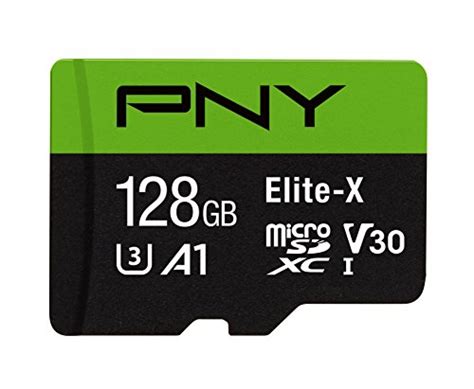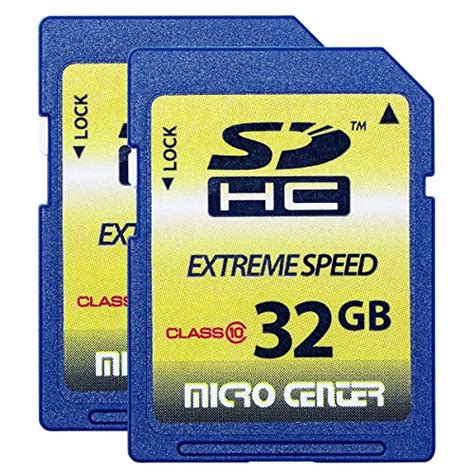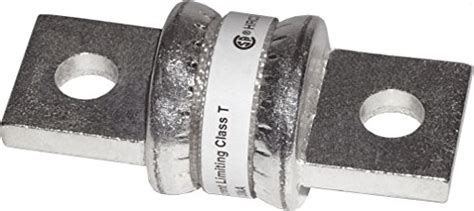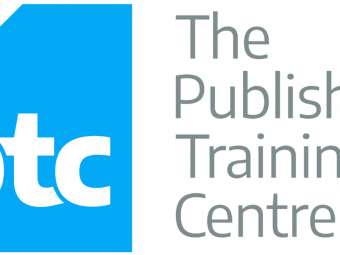
The new PMC design is here! Learn more about navigating our updated article layout. The PMC legacy view will also be available for a limited time.
An official website of the United States government
The .gov means it’s official. Federal government websites often end in .gov or .mil. Before sharing sensitive information, make sure you’re on a federal government site.
The site is secure. The https:// ensures that you are connecting to the official website and that any information you provide is encrypted and transmitted securely.
1Guildford Medical Device Evaluation Centre (GMEC), The Royal Surrey County Hospital, Egerton Road, Guildford, Surrey GU2 7XX
2NICE - MTEP, Level 1A City Tower Piccadilly Plaza, Manchester M1 4BD, UK
The Medical Technology Evaluation Programme (MTEP) within the National Institute for Health and Clinical Excellence (NICE) was set up in 2009; this is a programme focusing specifically on the selection and evaluation of new or innovative medical technologies (including devices and diagnostics).
One of the requirements to enable a product to be evaluated by the MTEP is that the device is CE marked or it will be CE marked within twelve months. This report was produced to describe the CE marking process for different categories of medical technology and the types/quality/quantity of evidence that are required for each category.
Medical devices cannot be placed on the European market without conforming to the strict safety requirements of the European Union; one of these requirements is the affixation of the CE conformity mark. This article is an overview of the CE marking process only; it is not a document that should be referred to on its own. All manufacturers wishing to gain a CE mark should refer to the official documents.
Collectively known as the Medical Device Directive (MDD), this core legal framework consists of three directives that regulate the safety and marketing of medical devices in Europe and came into effect in the 1990s. The three directives are the:
These have been supplemented since by several necessary updates, due to new and emerging technologies which have challenged the current framework, highlighted gaps and pointed to a certain scarcity of expertise.4 The MDD (article 1.2a) define a Medical Device as:
‘Any instrument, apparatus, appliance, material or other article, whether used alone or in combination, including software necessary for its proper application intended by the manufacturer to be used for human beings for the purpose of:
and which does not achieve its principal intended action in or on the human body by pharmacological, immunological or metabolic means, but which may be assisted in its function by such means.’
This is a conformity mark which all European medical devices must have before they can be marketed. It is seen as a declaration by the manufacturer that the product meets all the appropriate provisions of the relevant legislation including those related to safety and, where required, has been assessed in accordance with these. Article 1, MDD 93/42/EEC, states:
It shall be accompanied by the identification number of the notified body responsible for implementation of the procedures set out in Annexes II, IV, V and VI.
The CE conformity mark consists of the initials ‘CE’ taking the following form:
The various components of the CE marking must have substantially the same vertical dimension, which may not be less than 5 mm, although this minimum dimension may be waived for small-scale devices.
The initials “CE” do not stand for any specific words; it is a symbol that is seen as a declaration by the manufacturer that the product meets all the appropriate provisions of the relevant legislation. This includes those related to safety and it shows that, where required, the device has been assessed in accordance with the appropriate procedures. The CE mark also means that the product can be freely marketed anywhere in the European Economic Area (EEA) without further control.
Competent Authorities (CA), Notified Bodies (NB) and authorized representatives are all involved in the CE marking process. CA's exist in each European Member State and are nominated by each government to monitor and ensure compliance with its provisions of the MDD. The CA designates a NB to ensure that conformity assessment procedures are completed according to the relevant criteria. The authorized representative, designated by the manufacturers, is legally responsible for compliance with the regulations and acts as the first point of contact for the EU authorities.
It is up to the manufacturer to ensure that their product complies with the essential requirements of the relevant EU legislation. A general overview of the CE marking process is:
Irrespective of the class of the device, all devices must:
All medical devices are placed into one of four graduated categories, using the classification rules listed in Directive 93/42/EEC Annex IX.2 It is considered more feasible, economically and justifiably, to categorize medical devices rather than all of them being subject to the rigorous conformity assessment procedures.
The categories are Class I (including Is & Im), Class IIa and IIb and Class III, with Class III ranked as the highest. The higher the classification the greater the level of assessment required by NBs. It is the intended purpose of the device that determines the classification and not the particular technical characteristics. Considerations for classification include the duration of contact with the body, degree of invasiveness and local versus systemic effect. The highest possible class applies if a device can be classified according to several rules. Table 1 has details for each class.2
Examples of product classification
A conformity assessment procedure demonstrates that the device complies with the requirements of Directive 93/42/EEC.2 Compliance is stated by establishing a Conformity Declaration. The classification of the device dictates the appropriate conformity assessment procedure. In some cases the manufacturer has a choice of conformity route. The conformity assessment routes are shown in Figures 1 , ,2, 2 , ,3 3 and and4 4 .
Class I conformity assessment procedures
Class IIa conformity assessment procedures
Class IIb conformity assessment procedures
Class III conformity assessment procedures
This route is self-declaration or self-certification and is described in Annex VII Module A, EC Declaration of Conformity. The manufacturer ensures and formally declares, via a written statement, that the products meet the applicable provisions of the Directive.
The manufacturer declares conformity with the provisions of the Directive and Regulations (Annex VII) and ensures that the products comply with relevant essential requirements. However, for Class IIa products, this declaration must be backed up in all cases with conformity assessment by a NB using Annex II, IV, V or VI.
Manufacturers of Class IIb devices may also choose the full quality assurance route (Annex II) including assessment by a NB of the technical documentation for at least one representative sample for each generic device group for compliance with the Directive (Annex II section 7).
This route to conformity is similar to those for Class IIb devices but additionally requires the manufacturer to submit the design dossier to the NB for approval under audit of the full quality assurance system (Annex II) and do not allow the Annex VI option.
Active implantable medical devices (AIMD) and in vitro diagnostic medical devices (IVD) are also subject to conformity procedures.
For five years (15 years for implantable devices) after the final production of the device, the declaration of conformity, the technical documentation, the design dossier (if applicable) and the NB decisions and reports/certificates must be kept at the disposal of the CA.
As part of the compliance strategy, manufacturers also have to provide evidence of basic good manufacturing practice (GMP).5,6 The GMP or Formal Quality System applies to devices in Class Is, Im, IIa, IIb and III, AIMDs and IVDs listed in Annex II and those for self-testing. Basic Class I medical devices (non-measuring and not supplied sterile) and general IVDs (IVDs that are not for self-testing and/or do not appear in Annex II) do not need a formal or full quality system, basic GMP is sufficient.
This document is required for all medical devices, AIMDs and IVDs, and is a written statement produced by the manufacturer to formally declare that a named product conforms to the appropriate directives. If more than one Directive is applicable then these should all be listed on the declaration. It also identifies who is responsible for a product and provides a first point of contact if there are any problems to be investigated. It must be kept in the technical file.
The declaration of conformity should have the name and address of manufacturer, identification of the product allowing traceability, list of relevant directives, declaration statement, name and position/job title of person signing. This should be someone with enough responsibility to ensure the declaration is true which is affirmed by their signature and date.
These have to be produced to allow the assessment of the conformity with the essential requirements of the Directive; the level and complexity of detail will depend on the conformity assessment route. Overall it should cover the design, manufacture and intended operation of the product. The ‘operation’ of the product includes installation, preparation for use, pre-use checks and maintenance, calibration and servicing as appropriate to the particular medical device. Data has to be provided that is sufficient to demonstrate that the device will perform safely and achieve the stated performance claims for its intended use. The technical documentation must include:
The technical documentation and quality management system (QMS) are audited annually by the NB. The NB must also periodically carry out appropriate inspections and assessments to ensure the manufacturer applies the approved QMS and produce a report. They may also carry out unannounced visits to check that the QMS is working properly and produce a report on their findings. The manufacturer must inform the NB of any changes applied to the QMS.
Any reports or decisions issued by the NB should be kept in the technical file. These may include surveillance, inspection, test and clinical evaluation assessment reports or an approval of changes decision as outlined below.
For basic class I devices, only the declaration of conformity is required before affixing the CE marking and placing the device on the market. All other devices are required to be certified by third parties. These third parties are laboratories; inspection and the certification bodies are the NBs. Following a successful conformity assessment, the NB issues an EC certificate indicating the route to certification. The manufacturer, having signed a declaration of conformity, can then legally place the CE marked product on the European market.
Technical files and design dossiers are viewed as controlled documents and as such should be part of the manufacturer's quality system with systems in place to update.
The manufacturer should be able to demonstrate where and how the documentation is held and maintained. The pages should be numbered and the information be presented in an organized, concise and coherent manner to facilitate review by the NB, if applicable, as conclusions and synopsis. Tables and flow charts are effective mechanisms to provide summary results. Generally, documents that demonstrate compliance with the essential requirements are summarized in the text of the technical file or design dossier and included as an attachment or appendix.
Although the rules will adequately classify the vast majority of existing devices, a small number of products may be more difficult to classify. If a manufacturer is unsure how its devices should be classified, it should first consult a NB. If doubts remain or there is a disagreement with the NB, the relevant CA should be approached in accordance with Article 9 of Directive 93/42/EEC.2 Exemptions from CE marking include:
Each medical device can only be placed on the market and/or put into service when the product complies with the provisions of all applicable directives and when the conformity assessment has been carried out in accordance with all the directives. As a result, several directives may have to be taken into consideration for one product; these include: General Product Safety Directive (92/59/EEC),7 Medical Electrical Equipment (BS EN 60601) and the Directive of Electromagnetic Compatibility (2004/108/EC).8
The authors have no competing interests to declare. All articles were originally commissioned by NICE from independent External Assessment Centres (EACs) to address areas of interest to the Medical Technologies Evaluation Programme (MTEP, originally known as Evaluation Pathways EP). The EACs were engaged under a contract to NICE
NICE
Not applicable
Chris Pomfrett
Elaine French-Mowatt wrote the first version of the manuscript while working for GMEC, an independent academic External Assessment Centre working under contract to NICE.
Joanne Burnett extensively edited and updated the manuscript in order for it to be suitable for publication. Joanne Burnett is a Technical Analyst working in the Medical Technologies Evaluation Programme (MTEP) of NICE.
Dr Chris Pomfrett does not claim authorship, but acted as supervising editor for this work in NICE. Dr Chris Pomfrett is a Technical Adviser working in MTEP at NICE
None
Connect with NLM
National Library of Medicine 8600 Rockville Pike Bethesda, MD 20894
Web Policies FOIA HHS Vulnerability Disclosure
Help Accessibility Careers
 Pny 128gb Elite X Class 10 U3 V30 Microsdxc Flash Memory Card 100mbs
Pny 128gb Elite X Class 10 U3 V30 Microsdxc Flash Memory Card 100mbs
 Academy Of Beasts V Shifter Romance
Academy Of Beasts V Shifter Romance
 Beast Academy 5a Practice
Beast Academy 5a Practice
 32gb Class 10 Sdhc Flash Memory Card Standard Full Size Sd Card Ush I U
32gb Class 10 Sdhc Flash Memory Card Standard Full Size Sd Card Ush I U
 Go Power F 200 Class T 200 Amp Slow Blow Fuse Silver
Go Power F 200 Class T 200 Amp Slow Blow Fuse Silver
 Blue Sea Systems 5116 Fuse A3tclass T 200a
Blue Sea Systems 5116 Fuse A3tclass T 200a
 Eureka Peanuts Classic Characters Deco Kit 840227
Eureka Peanuts Classic Characters Deco Kit 840227
 Eureka Peanuts Geometric Back To School Classroom Supplies Record And Less
Eureka Peanuts Geometric Back To School Classroom Supplies Record And Less
 Marathon Revised And Updated 5th Edition The Ultimate Training Guide Advice
Marathon Revised And Updated 5th Edition The Ultimate Training Guide Advice
 La Bella 413p Studio Classical Guitar Strings
La Bella 413p Studio Classical Guitar Strings
 12 Easy Classical Masterpieces For Solo Guitar Complete Classical Guitar Arran
12 Easy Classical Masterpieces For Solo Guitar Complete Classical Guitar Arran
 Classical Guitar Anthology Classical Masterpieces Arranged For Solo Guitar
Classical Guitar Anthology Classical Masterpieces Arranged For Solo Guitar











![Chatbot online courses [for freshers and experienced] Chatbot online courses [for freshers and experienced]](https://www.courses-for-you.com/images/uploads/thumbs/11-23.jpeg)


